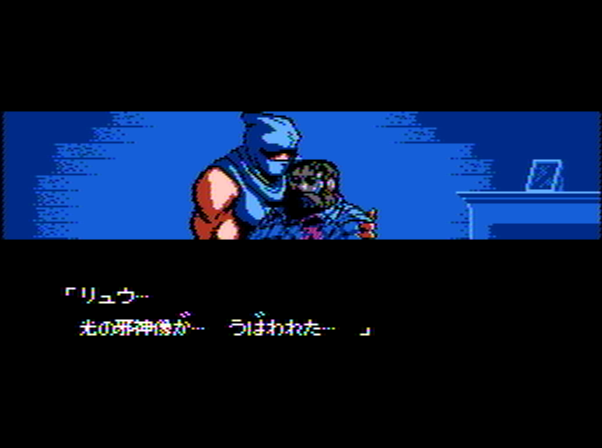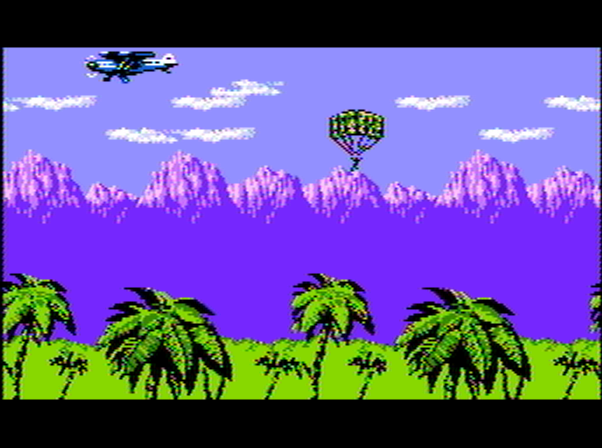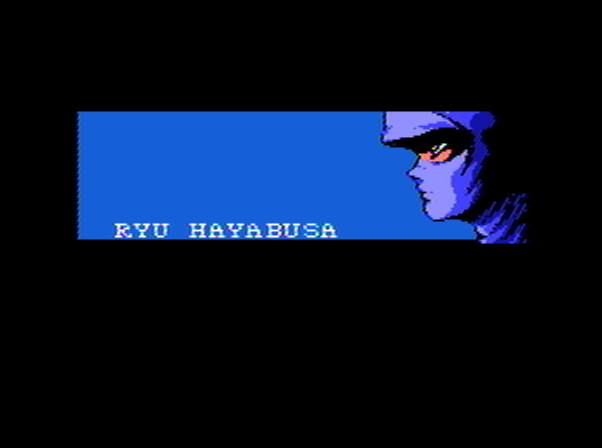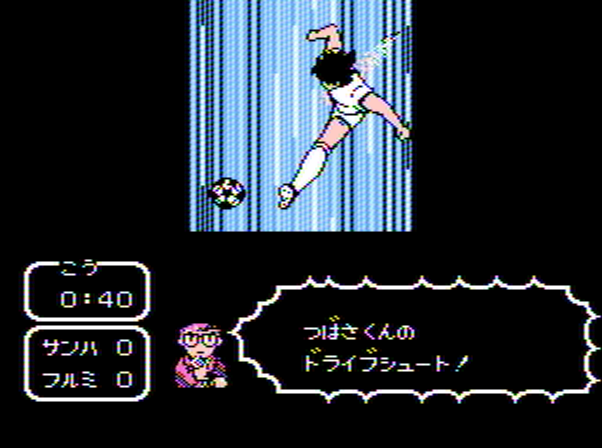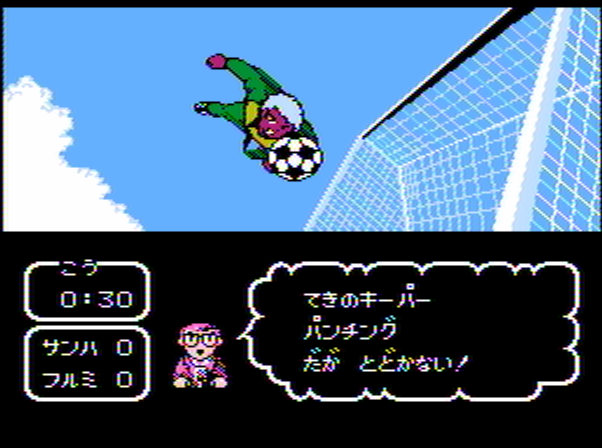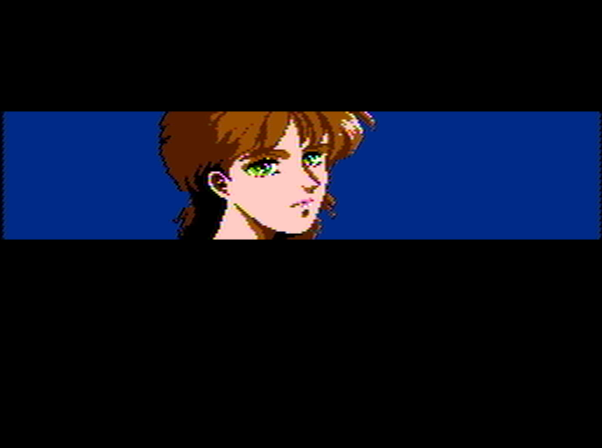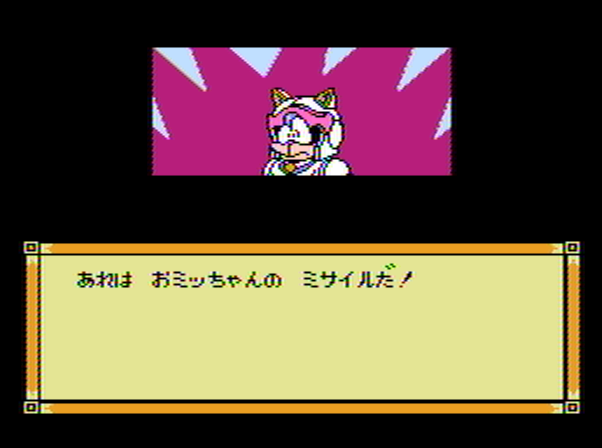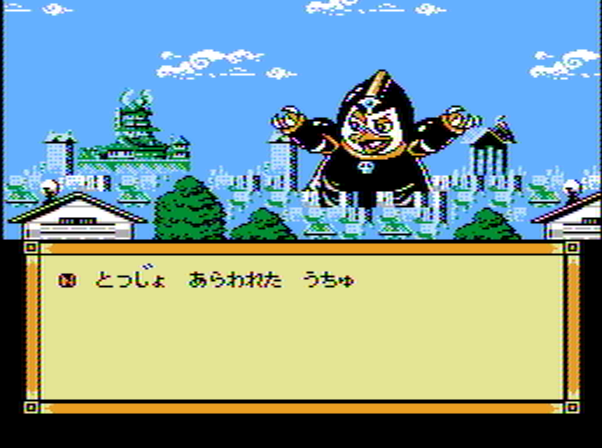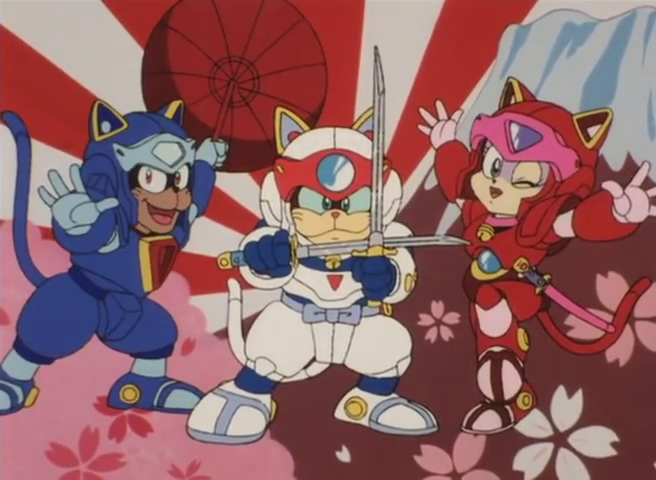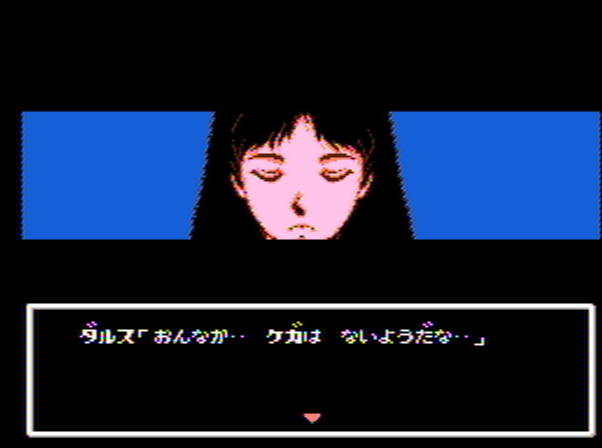11.22.20
Play a Game or Watch a Movie?
Imagine that you’re a kid in the 80s and ninjas are at peak coolness. It’s the weekend and you have all the time in the world. What do you do? Do you play a ninja video game? Do you watch some ninjas on TV?
Or do you do both?
That’s right. Japanese game publisher Tecmo has got you covered.
Enter the Tecmo Theater Games
The graphics provided by the Famicom at the time were already impressive. However, the developers at Tecmo were confident that the Famicom hardware could be pushed further. What if the Famicom could display cinematic or full-screen, comic styled graphics? One developer in particular, Hideo Yoshizawa, took the initiative to make it happen.
I’ve always liked looking at storyboards, like the ones made by Hayao Miyazaki for his films. The NES is actually pretty good and showing still scenes, but when I was researching what the hardware was capable of, I discovered that there could be ways to implement cinematic displays scenes with a certain methodology. Nobody else was doing it at the time, so I ended up taking the initiative to try and make it happen. It ended up working out really well!
Hideo Yoshizawa from “INTERVIEW: Hideo Yoshizawa and Keiji Yamagishi” (gaming.moe)
The techniques worked out by Hideo Yoshizawa would be the genesis of Tecmo’s Tecmo Theater series. Over the next three years, seven Famicom games would make use of these so-called Cinematic Display scenes. While these scenes were not especially interactive, they showcased much larger and more detailed graphics than other games at the time.
Vol 1: Captain Tsubasa
The Famicom Tecmo Theater line-up started in April of 1988 with the ambitious soccer/RPG hybrid Captain Tsubasa, based on the manga/anime franchise of the same name. Rather than going the traditional route like Nintendo’s own Soccer from three years earlier, Tecmo tested the waters of the Cinematic Display by showing detailed anime-inspired graphics depicting the characters from Captain Tsubasa. The large graphics show the athletes in action: running, passing, shooting, scoring goals.

The gameplay itself is driven by menus that have you deciding what your players should do in response to encounters with the other team. Do you try to dribble around your opponents? Do you pass? While a menu-based soccer game may not sound terribly interesting, the Cinema Display graphics go a long way in keeping the game suspenseful. You choose to take a shot, you see your player kick the ball, the ball soars through the air, the goalie dives — he misses! The ball is in the net! Goal! Sure, these things happen in other Famicom soccer titles, but it’s never this dramatic or…cinematic.
Vol 2: Ninja Ryukenden
The second title came months later in November of 1988: Ninja Ryukenden. This is probably the most-known game from the Tecmo Theater series (known outside of Japan as Ninja Gaiden or Shadow Warriors). Rather than leaning on a franchise, Ninja Ryukenden is an original creation — well, as original as a ninja game in the late 80s.
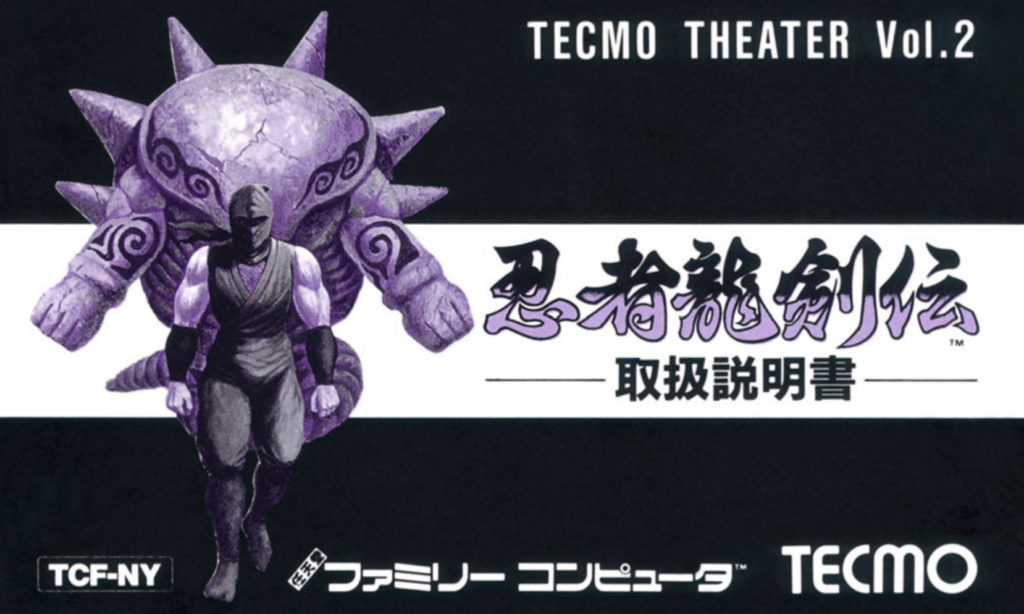
The presentation of Ninja Ryukenden is like a movie. There is a cinematic intro in which the premise of the game is laid out:
Two ninjas are shown facing off in a field in front of a full moon. The ninjas approach each other, leap into the air, and clash. Both ninjas return to the ground and one, after a slight pause, collapses. We then see a young ninja, Ryu Hayabusa, reading a letter left by his father. It says that he is off to a dual to the death and, if he should lose, Ryu is to take the family’s sword, the Dragon sword, and go to America to seek out archaeologist Walter Smith. Ryu swears revenge and follows his father’s last wishes.
The player gets all of that story before they even press the start button. Clearly Tecmo was going for something more than simply “advance towards the enemy base” or “play these four themed stages and then play the final stage.” Although this is the second game in the Tecmo Theater series, it is the first where Yoshizawa could really take his love for movies and do all he could to translate it to the Famicom. The scenes are far more dynamic here than in Captain Tsubasa‘s scenes. Characters sweep from one side of the screen to others. Scenes fade-in and fade-out. Music sets the tone for the dialog. Sound effects punctuate sudden twists and turns. Cinematic Displays, indeed.
The manual for the NES Ninja Gaiden describes them this way:
“Ninja Gaiden” has a Cinema Display (TECMO’s unique system) that shows movie-like scenes. Movie techniques such as close-ups of characters and different camera angles are used. In addition there are great sound effects and background music.
The storyline has one great scene after another, rising to an exciting climax. Follow the story and then put yourself to the test as the screen changes to the game mode. This is where your skill comes into play! After wiping out your enemy and reaching your goal, continue on with the story. You become the Ninja Dragon.
Ninja Gaiden manual, NES (US)
The scenes typically leave Ryu at a point of conflict. A mysterious villain stole the statue? Go get them! This is where the gameplay comes in. The game is a notoriously well-made action platformer, if not notoriously difficult. You probably know how it goes already. You run and jump and climb walls, slashing at enemies with the Dragon sword and an array of ninja techniques. Each stage ends with a boss fight and then it’s back to the story scenes. If you can make it to the end of the game, you’ll be treated to one of the most visually stunning endings in Famicom history.
Vol 3, Vol 4, Vol 5: More Ninjas and More Soccer
The next three volumes of Tecmo Theater games are sequels to the first two volumes:
- Vol 3: Ninja Ryukenden II: Ankoku no Jashinken (April, 1990)
- Vol 4: Captain Tsubasa II: Super Striker (July, 1990)
- Vol 5: Ninja Ryukenden III: Yomi no Hakobune (June, 1991)
Ninja Ryukenden II keeps things cinematic. The opening scene frames the antagonist overlooking a mountain range on a stormy night. The camera slowly pans to the right as shocks of lightning brighten the purple skies and briefly illuminate the villain’s long, flowing cape. He speaks with a henchman, and then continues to brood as the music raises in intensity. Headshots of the protagonists are mixed in like actors being introduced at the start of a movie.
Gameplay stays where you’d expect it: still a ninja, but with a few new special moves at your disposal. Most notably is a power up that splits Ryu into two ninjas. The “phantom” ninja does all of the same moves as Ryu, but at a delay. When mastered, this can be used to have the phantom ninja stay in one place and attack as Ryu stays out of harm’s way.
Captain Tsubasa II adds some complexity to its predecessor, but still plays very similarly. There are more strategic decisions that can be made (such as choosing your teams formation on the field), the lower field shows players from both teams while dribbling, and there are special moves that can be performed (at the cost of more “guts” — a sort of stamina counter). The Cinema Display scenes overall are upgraded as well, with more details placed on scenes that happen between matches and some more dynamic angles for scenes shown during matches.
And then we’re back to ninjas. Ninja Ryukenden III changes up the Cinema Display portions by focusing on more detailed character artwork and by using more animation than before. Whereas the first two games animated by using “camera” motion, the third game does its best to work in actual animation. There is hair blowing in the wind. We see a woman fall into the ocean with a splash as the edge of a cliff breaks away. It’s a matter of opinion whether or not it is as effective as the previous titles but it is certainly more ambitious.
Gameplay continues to be Ryu slicing up enemies. The phantom ninjas are gone and some new powerups are introduced. Ryu can now easily climb up from a wall onto a ledge. He can also swing up and down from certain platforms. Stage graphics are detailed throughout and enemies and level scrolling are super-smooth. It’s a great example of a late-era action platformer made by a seasoned development shop.
Vol 6: Kyatto Ninden Teyandee
Just one month after Ninja Ryukenden III, Tecmo added another ninja title to their Tecmo Theater lineup — but this time the ninjas are cats! In July 1991, Kyatto Ninden Teyandee saw its Famicom release, based on the anime series of the same name.
The game revels in its anime origins by using its cinematics to place the player into their own episodes. One cinematic sets up the plot before the platforming action begins; a second cinematic plays when the stage boss is reached; and a third cinematic closes out the stage after the boss is defeated.
The cinematic scenes recreate the characters from the anime fairly faithfully. During dialog cinematics, characters are typically shown with two frames of animation (like a moving mouth, for example) and sometimes with an animated background, as well. Things are generally very bright and colorful — a striking contrast from the dark tones and shadows of Ninja Ryukenden.
The gameplay involves controlling the Nyankii through some easy action platforming stages. You can switch characters in the middle of the stage, which you’ll need to do to solve some very light puzzle elements (one cat can break certain blocks, one can fly, one can swim, etc). Like the cinematics, the stage graphics do a great job recreating the vibe of the anime.
Vol 7: Radia Senki: Reimei-hen
1991 was a busy year for Tecmo and the Tecmo Theater line-up! In November of 1991, Tecmo released an ambitious RPG and the last title in the Famicom theater series: Radia Senki: Reimei-hen.
The opening cinematic shows Princess Lefis blasting off in a ship from a castle on top of a mountain (what is it with Tecmo and mountain-top castles?). The ship is soon engaged by a second ship piloted by the villain Gadiss. Gadiss fires at Lefis, damaging her ship’s wing, and the ship goes down.
Upon starting the game, you take control of a nameless hero who has forgotten who they are. You are quickly befriended by a mage named Darus who helps you take out a few wandering monsters. The game strings you along until you find Princess Lefis and her crashed ship, and then the game’s plot truly begins: Gadiss is seeking world domination and must be stopped!
Given Tecmo’s penchant for showing large, cinematic graphics, one might expect Radia to be a sort of menu-based adventure RPG, making it similar (in some ways) to the Captain Tsubasa titles. Tecmo, instead, went for a traditional top-down console RPG.
Well, perhaps traditional is not the best word to describe Radia. While the Famicom had plenty of iteratitve Dragon Quest clones, Radia does its best to make itself stand out — in both its gameplay and its story-telling techniques.
Radia is often described as a JRPG mixed with Zelda, and for good reason. There is no separation of overworld and towns/dungeons. Screens are broken up into smaller areas (a forest, a beach, a town, a cave, etc). The screen scrolls smoothly in both directions within these areas and only transitions when going from one area to another.
The battle system is quite unique for its time. Encounters are random, but rather than being taken to a separate battle screen (such as in Dragon Quest or Final Fantasy), the player’s party gets locked onto the current screen and the battles play out in real-time like an action RPG. The battles can be cumbersome at time given how slowly they move, but it’s certainly unlike other RPGs.
The cinema displays here also diverge from the norm. Given that this is an RPG rather than an action game, there is more of a story to tell. Instead of breaking up the normal gameplay for full-screen cinematics, it seems to take on one of three different approaches.
There are many scenes with characters talking to each other (sometimes with character portraits) in order to move the story along. These scenes play out using the in-game graphics. There is even a feature to have your party talk to each other in order to get an idea of what to do next.
There are occasionally scenes that use some mix of in-game graphics with additional graphics and animations. These can be scene during the intro as the ships clash and crash, and also when the hero and Darus observe Lefis crashing out in the distance.
And then there are the full screen cinematics that we’ve come to expect. These pop up during the intro when Gadiss is talking and then are used sparingly throughout the rest of the game.
Roll Credits
The cinematic approach certainly set these games apart from their contemporaries, but they are known and loved for really bringing the whole package: great visuals, great music, and great gameplay. All of them are well worth adding to your collection.
If you want to enjoy these games in English, there are NES versions of the three Ninja Ryukenden games, a partial fan translation of Captain Tsubasa (which also got an NES release as Tecmo Cup – Soccer Game, but was rather badly butchered in the process), a full fan translation of Captain Tsubasa II, and a full fan translation of Radia (which was slated for an NES release as well, but never happened!).
And that wraps it up for the Tecmo Theater series. Sports, Ninjas, Fantasy! What more could you want?








